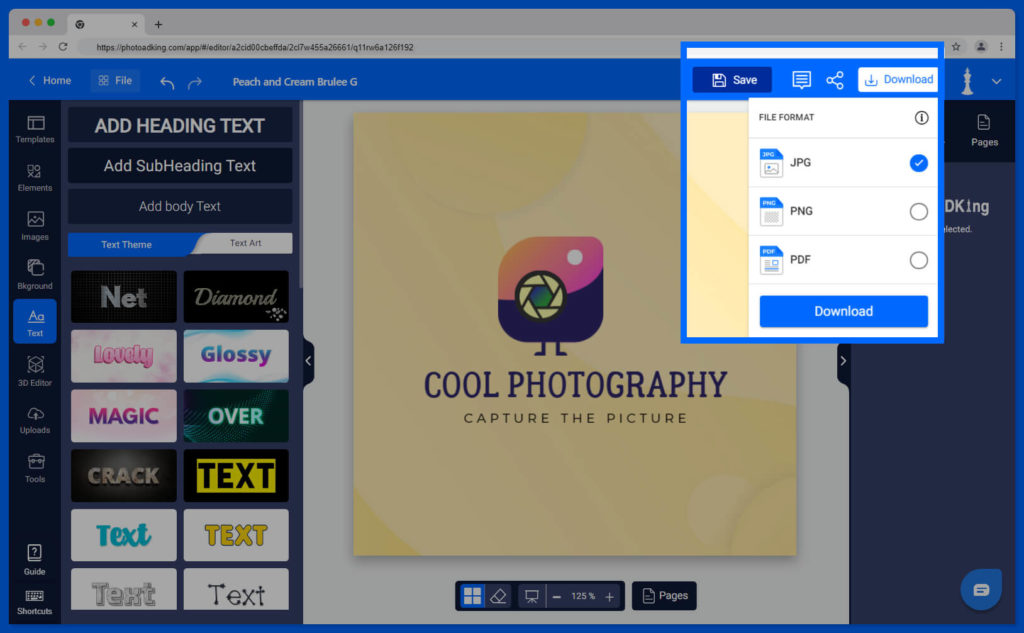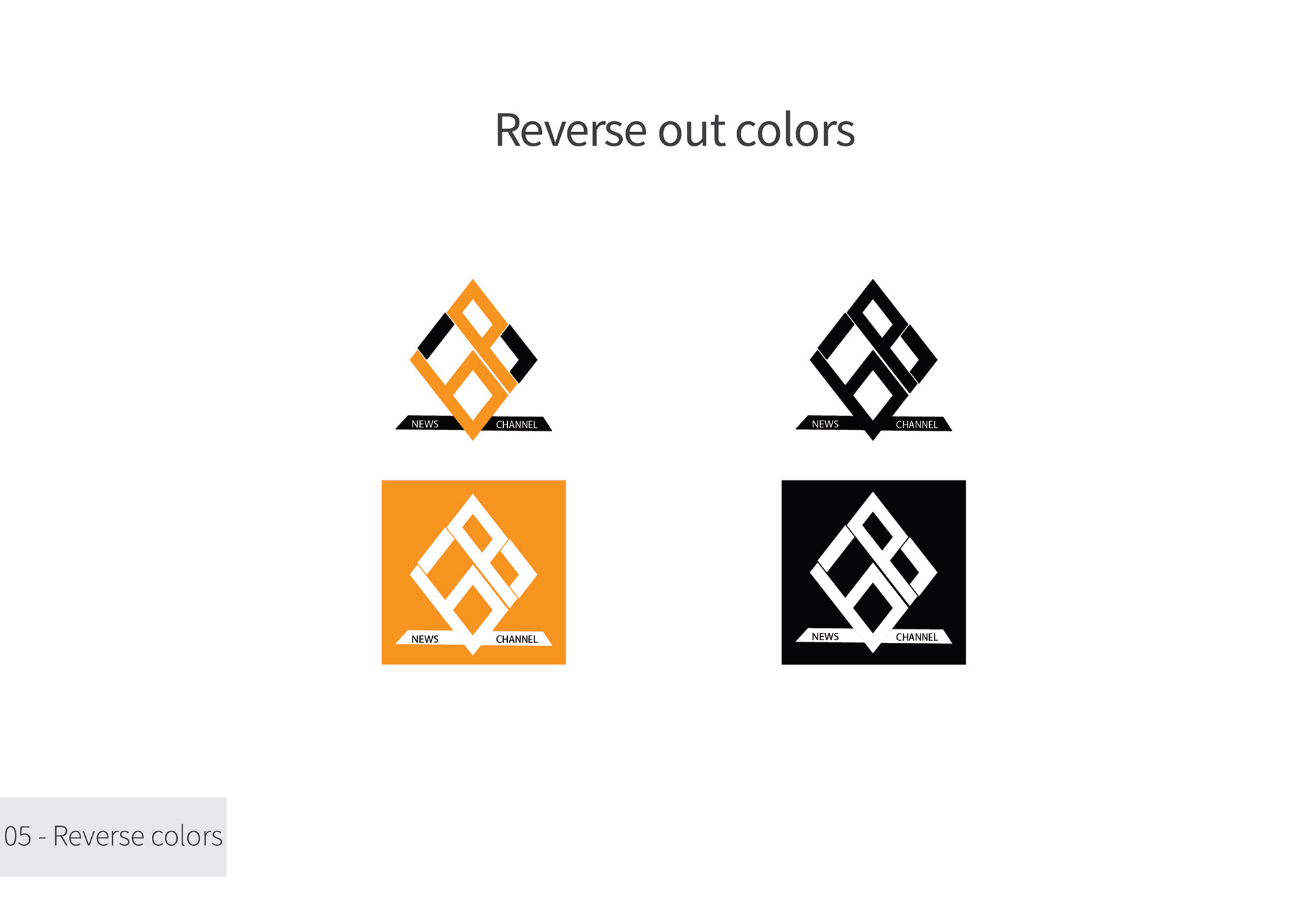When it comes to building a strong brand, your logo is often the first impression customers get. Editing a logo might sound intimidating, but it’s a powerful way to tailor your brand’s identity to fit your evolving vision. Whether you’re updating colors, tweaking shapes, or adding new elements, thoughtful edits can make your logo more memorable and aligned with your brand message. In this guide, we’ll walk through the essentials of editing Shutterstock logos and how to do it effectively to boost your branding efforts. Let’s dive in and make your logo work harder for your business!
Understanding Shutterstock Logos and Licensing

Before you start editing a Shutterstock logo, it’s crucial to understand what you’re working with—specifically, the licensing and usage rights involved. Shutterstock is a popular platform offering a vast library of images, vectors, and logos, but not all content is free to modify or use in any way you like.
Here’s what you need to know about Shutterstock logos and licensing:
- Licensing Types: Shutterstock offers two main types of licenses—Standard and Extended. The Standard license is suitable for most commercial uses, but there are limitations on how many copies or impressions you can make. Extended licenses remove many restrictions, allowing for broader use and modification.
- Rights and Permissions: When you download a logo from Shutterstock, you’re granted specific rights to use it within the license terms. However, modifying the logo might require additional permissions, especially if it’s a copyrighted or trademarked design.
- Trademark and Copyright Considerations: Some logos on Shutterstock might be protected trademarks or copyrighted material. Before editing and using a logo for branding purposes, ensure you have the right to do so to avoid legal issues.
- Attribution: Depending on the license, you may need to give credit to Shutterstock or the original designer. Always check the licensing agreement to stay compliant.
In essence, understanding the licensing terms helps you avoid legal pitfalls and ensures your logo editing efforts are within the legal scope. If you’re unsure, consulting with a legal expert or Shutterstock’s support can save you headaches down the road.
Tools Needed for Logo Editing

Alright, so you’ve got your Shutterstock logo ready to go, but now you’re wondering, “What tools do I need to make those perfect edits?” Don’t worry, you don’t need a fancy graphic design degree or expensive software. There are plenty of user-friendly options that can help you tweak your logo efficiently and professionally.
Here’s a quick rundown of the essential tools:
- Adobe Photoshop: The industry standard for editing images. Perfect for detailed edits, color adjustments, and creating transparent backgrounds.
- Adobe Illustrator: Great if your logo is vector-based. It allows you to scale your logo without losing quality and make precise edits.
- Canva: An easy-to-use online platform, perfect for quick edits, adding text, or simple modifications. It’s especially handy if you don’t have design experience.
- GIMP: A free, open-source alternative to Photoshop. It offers many powerful features suitable for logo editing.
- Inkscape: Open-source vector graphics editor, ideal if you want to work with SVG files or convert your logo into a scalable design.
Additionally, depending on what changes you want to make, you might need:
- Image editing tools for color correction
- Font management software if you’re adding or changing text
- Background removal tools if you need a transparent logo
Most of these tools have free trials or free versions, so you can experiment and see which one fits your workflow best. Remember, the goal is to choose a tool that allows you to make clean, professional edits without overwhelming you with complicated features.
Step-by-Step Process to Edit a Shutterstock Logo
Now that you’ve got your tools sorted, let’s walk through a simple, effective process to edit your Shutterstock logo for branding purposes. Whether you’re changing colors, adjusting the layout, or adding your company name, these steps will guide you through a smooth editing journey.
Step 1: Download Your Logo
Start by downloading the high-resolution version of your Shutterstock logo. Preferably, choose a vector format like SVG or AI if available, for flexibility in editing. If only raster formats like PNG or JPEG are available, don’t worry—you can still edit, but scaling might be limited.
Step 2: Open Your Logo in Your Editing Software
Launch your chosen editing tool and open the logo file. If it’s a vector file, Adobe Illustrator or Inkscape are ideal. For raster files, Photoshop or GIMP work well. Make sure to keep a backup copy of the original before making any changes.
Step 3: Prepare the Logo for Editing
Remove any unnecessary backgrounds or layers, especially if the logo has a white background. Use selection tools or background removal features. If you plan to change colors, ensure the logo’s elements are separated into different layers or groups for easy editing.
Step 4: Make Your Edits
- Change Colors: Use the color picker or fill tools to update the logo’s color scheme to match your branding palette.
- Add or Modify Text: Insert your company name or slogan using the text tool. Choose fonts that align with your brand personality.
- Adjust Layout: Resize or reposition elements for better balance and visual appeal.
- Refine Details: Zoom in and clean up any rough edges or pixelation. Use smoothing or sharpening tools as needed.
Step 5: Save and Export the Edited Logo
Once satisfied, save your project file (like PSD or AI) for future edits. Then, export the logo in various formats:
- PNG: For transparent backgrounds and web use.
- JPEG: For non-transparent needs, like print or presentations.
- SVG: For scalable, high-quality digital use.
Step 6: Review and Test Your Logo
Finally, preview your logo on different backgrounds and sizes to ensure it looks great everywhere. Get feedback from colleagues or friends to see if it communicates your brand effectively. Make any final tweaks if necessary, and you’re all set!
And that’s it! With these steps, you can transform a Shutterstock logo into a unique branding asset that truly represents your business. Happy editing!
Tips for Customizing Your Logo to Match Your Brand Identity
Now that you’ve got a handle on the basics of editing your Shutterstock logo, it’s time to make it truly your own. Customizing your logo isn’t just about changing colors or fonts—it’s about ensuring that your logo visually speaks your brand’s story and values. Here are some practical tips to help you tailor your logo to perfectly match your brand identity:
Understand Your Brand Personality
Before diving into edits, take a moment to reflect on your brand’s personality. Are you fun and playful, or professional and serious? Your logo should reflect these qualities. For example, a playful brand might opt for bright colors and rounded fonts, while a corporate brand might go for sleek, minimalist designs.
Choose Colors Wisely
Colors evoke emotions and perceptions. Think about what feelings you want your audience to associate with your brand. Use the color palette feature in your editing tool to experiment with different shades. Remember, consistency is key, so stick to your brand’s main colors to maintain recognition across platforms.
Adjust Fonts and Typography
The font you choose can dramatically change the vibe of your logo. If the original font doesn’t fit your brand, consider switching to a typeface that aligns more closely with your brand’s personality. Keep readability in mind—your logo should be clear even at smaller sizes.
Incorporate Brand Symbols or Elements
If your brand has specific symbols, icons, or motifs, consider integrating them into your logo design. This could be a small icon that complements your text or a background element that emphasizes your brand’s core message. Just ensure these additions don’t clutter the design.
Maintain Simplicity
While it’s tempting to add lots of details, simplicity often leads to more memorable logos. Aim for a clean, uncluttered design that can be easily scaled and recognized. Remember, your logo will appear on various mediums—from websites to merchandise—so versatility is essential.
Test Different Variations
Don’t be afraid to create multiple versions of your logo. Experiment with different color schemes, layouts, and styles. Show them to colleagues, friends, or even your target audience to gather feedback. The goal is to find a version that resonates and aligns with your brand identity.
Ensuring Your Edited Logo Is Brand-Ready
Once you’ve customized your logo to your liking, it’s time to ensure it’s truly ready for prime time. A brand-ready logo isn’t just visually appealing; it’s versatile, scalable, and professional-looking across all platforms. Here’s how to make sure your edited logo hits the mark:
Check for Scalability and Resolution
Make sure your logo looks sharp at every size. Use high-resolution files and test how it appears in small (like social media icons) and large formats (like banners). If your logo becomes blurry or pixelated when resized, you might need to create or export it in a vector format, such as SVG or EPS, for perfect scaling.
Verify Color Consistency
Colors can look different across screens and print. Use standardized color codes (like HEX or Pantone) and preview your logo on various backgrounds to ensure consistency. This is especially important if you plan to use it in print materials or on different digital platforms.
Assess Versatility and Background Compatibility
Your logo should work well on different backgrounds—white, black, or colored. Create versions with transparent backgrounds and consider alternate color schemes (such as a monochrome version) for diverse uses.
Gather Feedback from Stakeholders
Before finalizing, show your logo to team members, branding experts, or even loyal customers. Fresh eyes can catch details you might overlook and provide valuable insights about its impact and clarity.
Save Multiple Formats
Ensure you have your logo saved in various formats suited for different uses:
- PNG with transparent background for web use
- JPEG for general purposes
- SVG/EPS for scalable, high-quality print and digital use
Document Your Logo Guidelines
Once finalized, create a simple branding guideline document that outlines how to use your logo correctly—acceptable color variations, minimum sizes, spacing, and incorrect uses. This helps maintain consistency as your brand grows.
In summary, turning your edited Shutterstock logo into a brand-ready asset involves a mix of technical checks and strategic considerations. When your logo is scalable, versatile, and aligned with your brand message, it becomes a powerful tool to enhance your brand’s recognition and credibility across all channels.
Legal Considerations When Modifying Shutterstock Logos
Before you dive into editing a Shutterstock logo, it’s really important to understand the legal landscape surrounding the use and modification of copyrighted images. Shutterstock provides a vast library of images, but most of these are protected by copyright law, which means you can’t just tweak them without considering the rights you’ve purchased.
When you buy a Shutterstock license, you’re typically granted specific usage rights, but these rights often come with restrictions—especially when it comes to altering the original work. Modifying a logo might seem harmless, but it can tread into legal gray areas if you’re not careful. Here are some key points to keep in mind:
- Check Your License Type: Shutterstock offers different license options. Standard licenses usually cover most commercial uses but limit modifications. Extended licenses might provide more flexibility, so always review what your license permits.
- Respect Trademark Rights: Logos are often trademarked. Even if you modify the Shutterstock logo, it may still infringe on the original trademark if it’s too similar or causes confusion. Always ensure your modifications don’t infringe upon existing trademarks.
- Avoid Deceptive Use: Your edits shouldn’t mislead consumers or imply an endorsement that doesn’t exist. For example, don’t make a Shutterstock logo look like your brand’s logo if it could cause confusion.
- Attribution and Licensing Compliance: Some images or logos might require attribution or have specific licensing terms. Make sure you adhere to these to stay within legal boundaries.
If in doubt, it’s always a good idea to consult with a legal professional or intellectual property expert. Remember, even if you’re just making minor edits, the original rights still belong to the copyright holder unless explicitly stated otherwise.
Taking these precautions not only keeps you legally safe but also shows respect for the creators and their work. When in doubt, opt for custom design or use logos specifically created for branding purposes, rather than heavily modifying stock images that could land you in legal hot water.
Best Practices for Saving and Exporting Your Edited Logo
Once you’re happy with your logo edits, the next step is to save and export your work properly. This might seem straightforward, but doing it the right way ensures your logo looks professional and is ready for different uses — whether online, print, or large-scale branding.
Here are some best practices to keep in mind:
Choosing the Right File Formats
- PNG: Great for web use, especially if you need transparency. Use PNG-24 for high quality without background color.
- JPEG: Suitable for quick web uploads or presentations. Avoid for logos with transparency or sharp edges.
- SVG: Ideal for scalable vector graphics. Perfect if you plan to resize your logo for different applications without losing quality.
- PDF: Good for high-resolution print, retaining vector quality.
Setting the Correct Resolution and Dimensions
For digital use, 72-150 DPI is usually enough, but for print, aim for 300 DPI or higher. Always save your original layered file (like PSD or AI) in addition to exported formats, so you can make future edits easily.
Organizing Your Files
- Keep different versions (e.g., color, black & white, with or without tagline).
- Use clear, descriptive filenames (e.g., “YourBrand_Logo_Final_300dpi.png”).
- Maintain a dedicated folder for your branding assets for easy access.
Export Settings Tips
- For web: Use PNG or SVG with optimized compression to reduce file size.
- For print: Save in high-resolution PDF or TIFF formats.
- Always double-check the color mode: RGB for screens, CMYK for print.
- If possible, save a copy with all layers preserved (like PSD or AI files) for future edits.
Finally, review your exported logo on different devices or in print proofs to ensure it looks sharp and professional. Taking the time to save correctly now will save you headaches down the line and ensure your branding remains consistent across all platforms.
Common Mistakes to Avoid When Editing Logos
Editing a logo, especially one from a platform like Shutterstock, can be a great way to personalize your branding. However, it’s easy to fall into some common pitfalls that can compromise the professionalism and effectiveness of your logo. Let’s go over some of these mistakes so you can steer clear and keep your branding on point.
Over-Editing or Over-Complicating
One of the biggest mistakes is overdoing it. It’s tempting to add lots of effects, shadows, gradients, or intricate details, but this can make your logo look cluttered and less recognizable. Remember, simplicity often leads to stronger branding. Think of iconic logos like Nike or Apple—they’re simple yet memorable.
Ignoring Brand Consistency
Your logo should reflect your brand’s identity. When editing, avoid making drastic changes that don’t align with your brand personality. For example, if your brand is fun and playful, a serious, corporate style won’t work. Maintain consistent colors, fonts, and style to keep your brand recognizable.
Using Low-Quality or Inappropriate Fonts
Fonts can make or break your logo’s appearance. Using low-quality or mismatched fonts can make your logo look unprofessional. Stick to fonts that are clear, legible, and match your brand voice. Also, avoid free or overly common fonts if you want your brand to stand out.
Poor Color Choices
Colors evoke emotions and convey messages. When editing, choose colors that align with your brand values and target audience. Also, ensure good contrast for readability. Avoid clashing colors or overly bright hues that can hurt the viewer’s eyes.
Not Considering Scalability and Versatility
Your logo should look great whether it’s on a business card or a billboard. Test your edited logo at different sizes. If details get lost or the design becomes unrecognizable when scaled down, it’s time to simplify.
Neglecting File Formats and Export Settings
Always save your final logo in multiple formats—vector (AI, EPS, SVG) for scaling and raster (PNG, JPEG) for web use. Using the wrong format can lead to pixelation or inability to resize without quality loss.
Skipping Feedback and Testing
Before finalizing, get opinions from others—colleagues, friends, or your target audience. Different perspectives can reveal issues you might miss. Also, test your logo across various backgrounds and mediums to ensure it works everywhere.
Conclusion and Final Tips for Effective Branding Through Logo Editing
Editing your logo is an exciting step toward creating a strong, memorable brand. But it’s essential to approach the process thoughtfully. Keep it simple, stay consistent with your brand identity, and pay attention to detail. Remember, a well-edited logo should be versatile, scalable, and evoke the right emotions in your audience.
Here are some final tips to keep in mind:
- Start with a clear vision: Know what message and feeling you want your logo to communicate.
- Use high-quality source files: Begin with the best possible version of your Shutterstock logo.
- Keep edits minimal: Make subtle adjustments rather than drastic changes to preserve professionalism.
- Test across platforms: Ensure your logo looks great on social media, websites, print, and merchandise.
- Seek feedback: Fresh eyes can spot issues you might overlook.
- Save multiple versions: Keep editable files and export in various formats for different uses.
Remember, your logo is the visual cornerstone of your brand. When edited thoughtfully, it can significantly boost your brand recognition and credibility. Take your time, be intentional with your edits, and don’t be afraid to revisit and refine your logo as your brand evolves. Happy branding!

